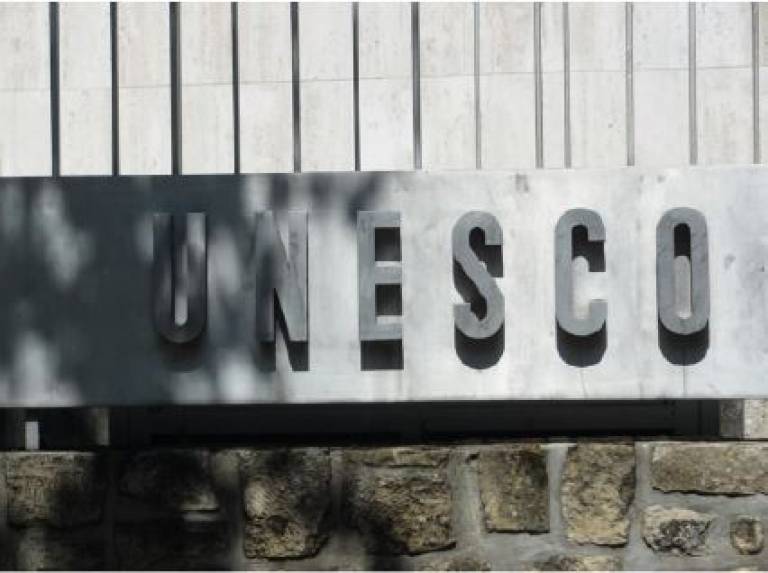Professor May Cassar to speak at Unesco in Paris
7 July 2015

This four-day conference will be the largest forum for the scientific community to come together ahead of the 21st UNFCCC Conference of the Parties (COP21), which will be hosted by France in December 2015 (“Paris Climat 2015”).
Building on the results of IPCC 5th Assessment Report (AR5), the Conference will address key issues concerning climate change in the broader context of global change. It will offer an opportunity to discuss solutions for both mitigation and adaptation issues. The Conference will also welcome Side Events organized by different stakeholders.
The conference is organized under the umbrella of ICSU, Future Earth, UNESCO and major French research institutions, with the support of the French Government.
Professor May Cassar is speaking in the session named, “Cultural Heritage facing up to Climate Change, Sea Level Rise and Pollution”. May’s session is called “Socio-cultural implications of Climate Change for Cultural Heritage” and the abstract is as follows:
When considering the interaction between cultural heritage and climate change, the most media-visible effort on climate change is undoubtedly scientific research. Yet society requires science to have wider context and meaning. It needs to be relevant. Therefore the socio-cultural impact of climate change must be part of any discourse on the implications of climate change for cultural heritage.
Not only would this inform our understanding and influence our response to climate change impacts, it can also make our response more resilient and sustainable. There are inherent cultural and social dimensions to climate change. Artists and sculptors, writers and poets, performances and exhibitions engage the public with climate change in ways that are necessary and important. They provide critical pathways for adaptation. The arts and humanities, social sciences and economic disciplines provide different lenses through which to develop new responses to life-changing events. By developing a range of perspectives, we improve our chances of co-creating sustainable survival strategies.
Cultural heritage research until recently, has been largely concerned with the impact on ancient and historic materials and assemblies such as those caused by increasing sea levels and floods, changes in the moisture contents of the air and in the conditions of soil (especially for archaeological sites) and migration of pests. Yet cultural heritage is more than stones, bricks and mortars.
In addition to these impacts, climate change can severely affect the sustainable conservation of cultural heritage places by altering the traditional way of life of communities. The relationship of communities to their landscape, their work and social habits, can be affected by the rapid deterioration of physical assets and loss of authenticity[i].
In 2008, World Monuments Watch and the World Monuments Fund provided dramatic evidence of these consequences when it listed a number of places at high risk of loss due to the effects of climate change. These included:
Herschel Island, Canada (from rising sea levels, eroding coastline and melting permafrost);
Scott’s Hut and the Explorer’s Heritage, Antarctica (from warming triggering large amounts of precipitation leading to microbial infestation and decay);
Sonargaon-Panam City, Bangladesh (from the low-lying terrain making it especially vulnerable to flooding and rising sea levels);
Leh Old Town, India (from changing weather patterns in the Himalaya bringing more rain in the summer thus creating problems for the flat mud roofs designed for the originally dry climate);
Kilwa Historic Sites, Tanzania(from serious rapid deterioration of the archaeological and monumental heritage due to erosion and vegetation caused by rainwater wash accentuating the risks of collapse of the remaining structures on the edge of the cliff); and
Chinguetti Mosque, Mauritania (from effects of the expanding desert, changing rainfall patterns, vegetation loss, soil erosion and extreme temperatures).
If scientific research is to understand deeply the cause and effect of change on cultural materials, and if it is to develop sustainable adaptation strategies, the values associated with these places need to be integral to the solution. This contribution will focus primarily on the language that is used to highlight the significance of these endangered sites in order to evaluate the extent to which the socio-cultural impacts of climate change are integrated into scientific studies of cultural heritage.
 Close
Close

